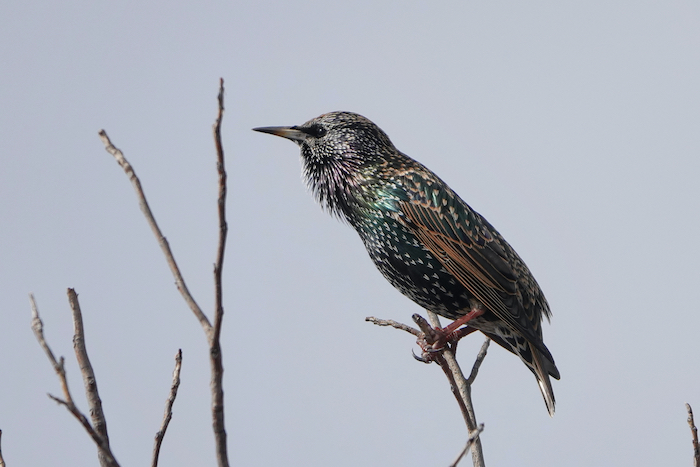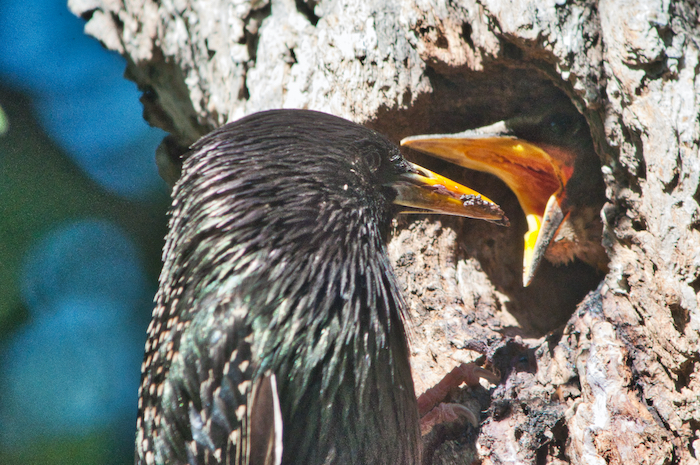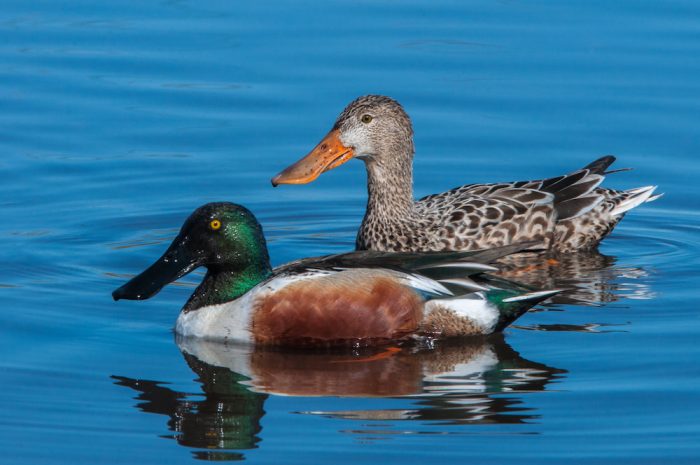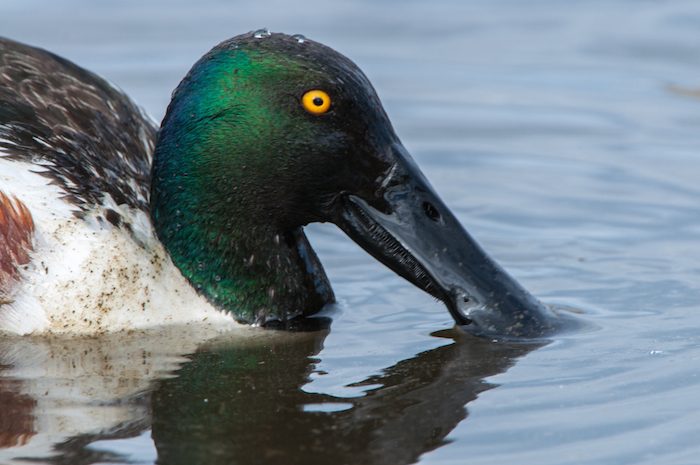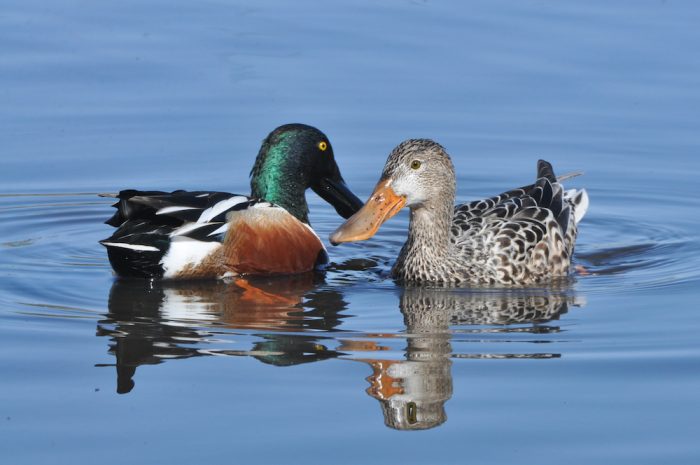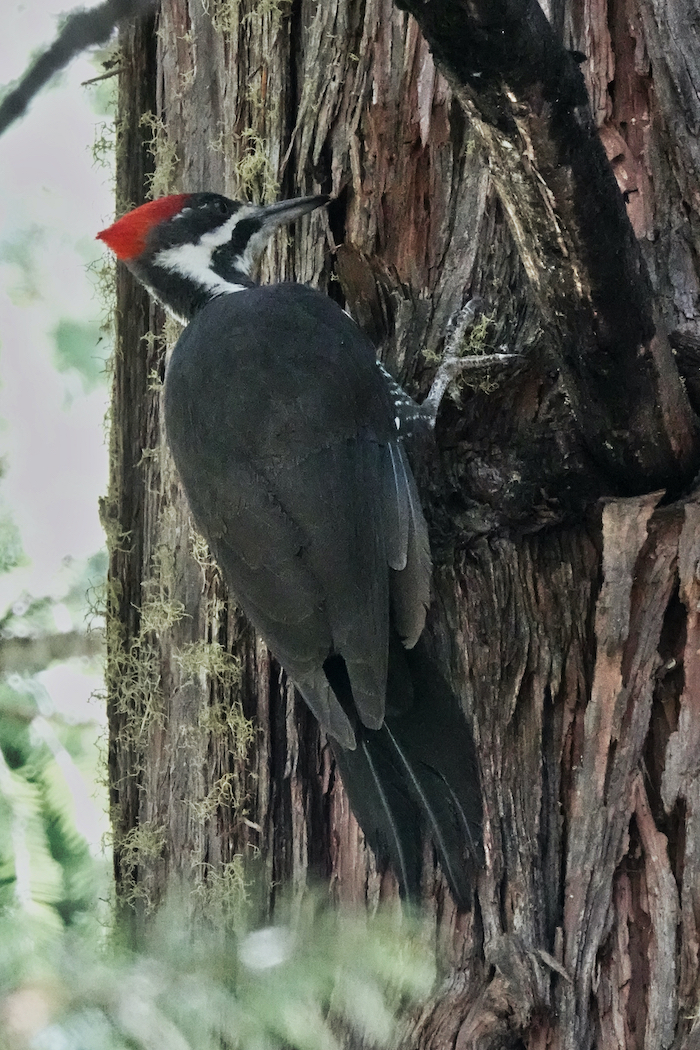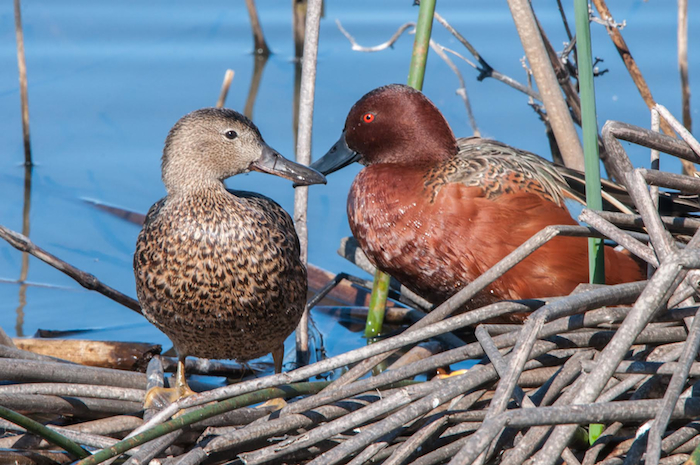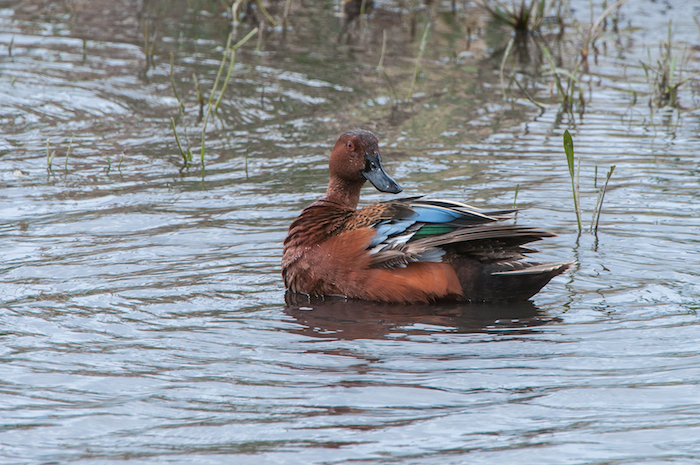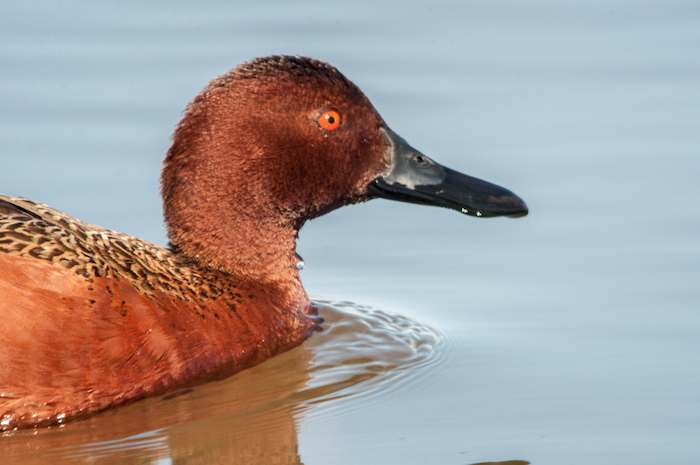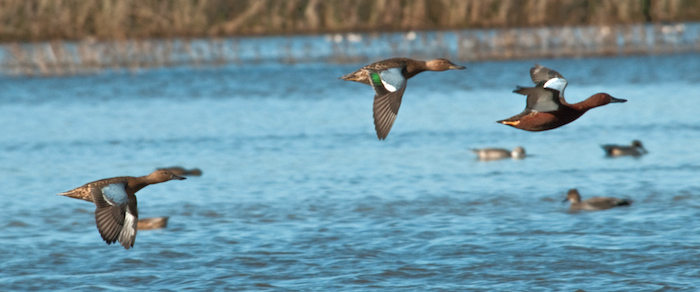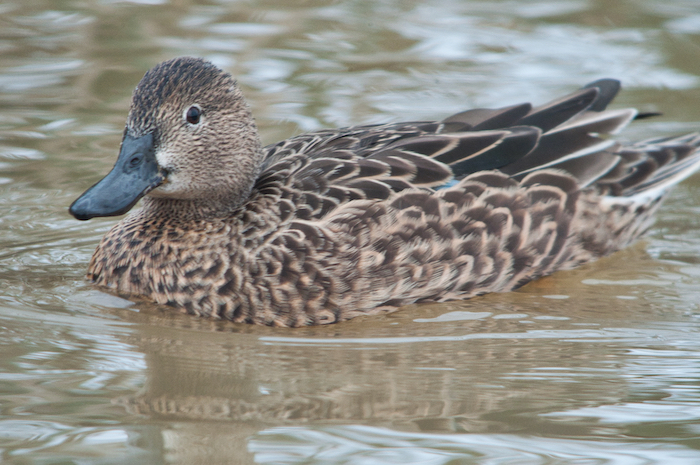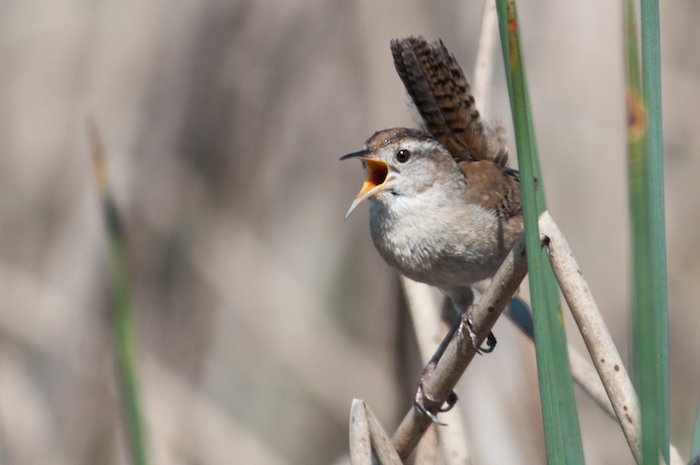
Marsh Wren Singing
The cattails are chattering, chittering, burbling, trilling, and buzzing! The noises of spring, evidence of things not seen, are pouring forth! And now is the best time to actually see the maestros of the marsh!
Responsible for most of the cattail chatter you’ll likely hear are marsh wrens. They are quintessential and versatile singers, storming the reeds with song from their little walnut-sized bodies. Some have stayed around all winter, quietly tucked into the tules. Now the longer and warmer days draw them out from their hideaways, both down in the ditches and down south.
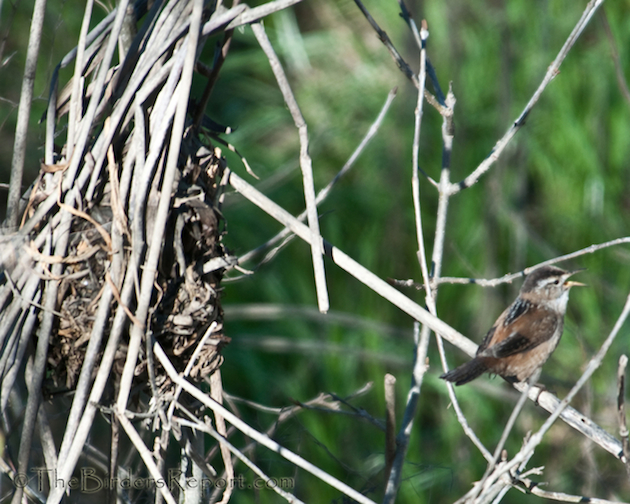
Males are busy building many nests throughout their marshy turf, and scolding away invaders–other male marsh wrens, too-forward blackbirds, poking egrets, and passing people. The nests are about a yard above water, big hollow softballs of reeds with a small entrance hole, all tied to surrounding vegetation. When a female arrives, with song and fluttering he will give her a guided tour of his six or ten or twenty nests. If she sees him as energetic enough to keep local predators away and help feed the fledglings, and if his territory is biologically rich enough to provide abundant insects and snails, she will line one of his nests with soft vegetation and feathers, and there incubate a handful of eggs.
A second and even a third female will receive the same treatment from the male, and the new females will make similar instinctive calculations.
All the parents seek to protect resources for their children, and will pierce the eggs or nestlings of competitors–usually blackbirds or other wrens. The birds are conducting their own sub-humane warfare, each parent liable to the same treatment it tries to deliver.
Eggs hatch after two weeks of incubation. Both parents feed the blind and naked babies, who in another two weeks turn bugs into a nest full of young birds as big as their parents.
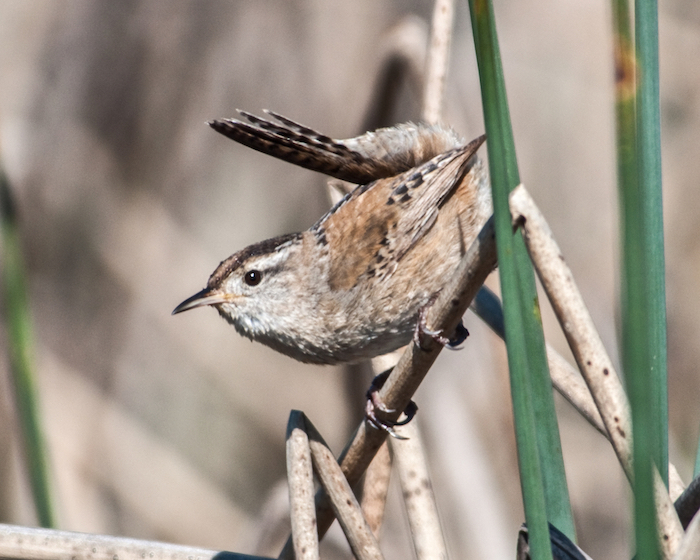
Eventually the young will grow their adult feathers–buffy browns, a white-ish eyebrow, and decorative black and white-lined plumes on their back. Good luck seeing them! Now, while they’re out courting, is the time!

